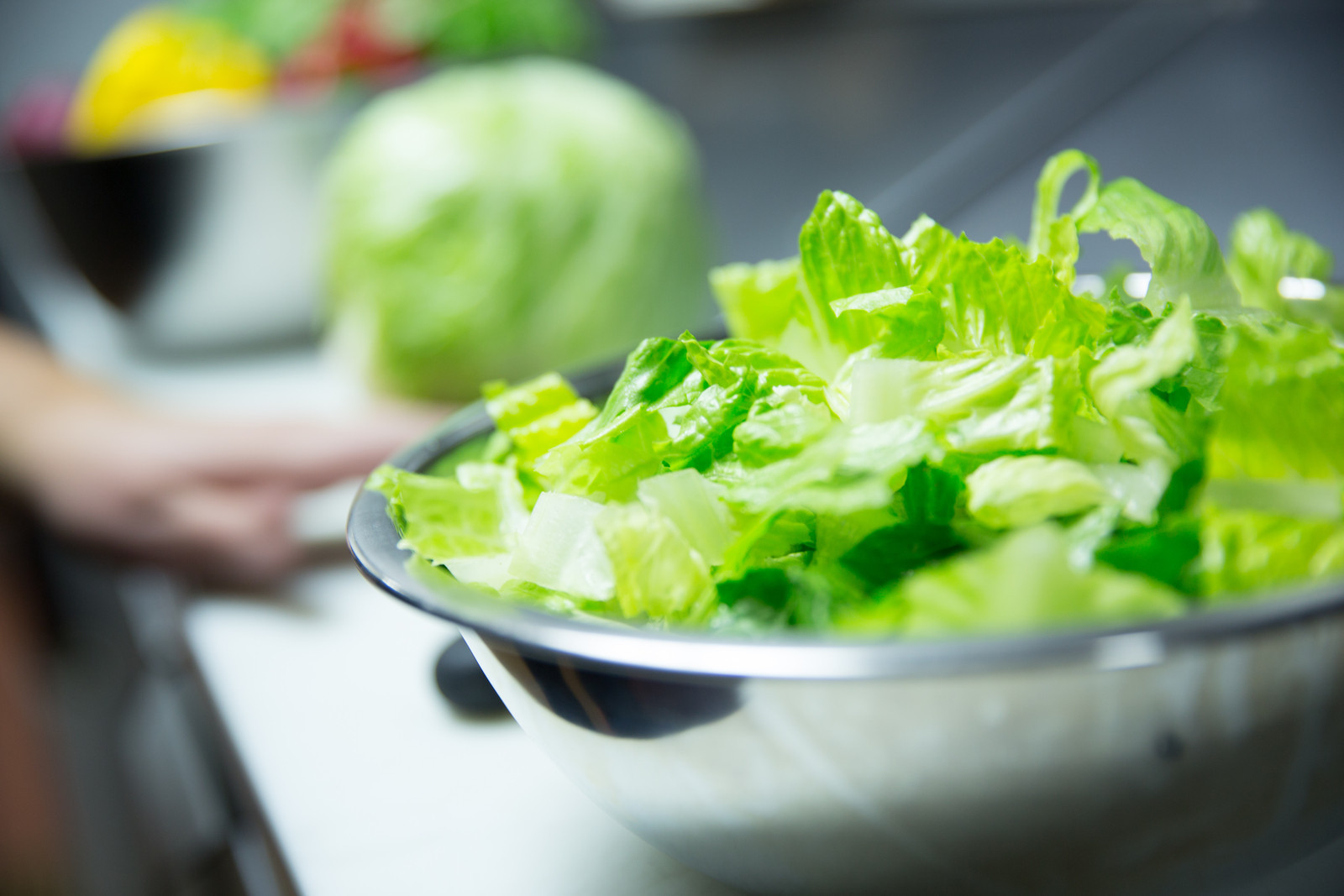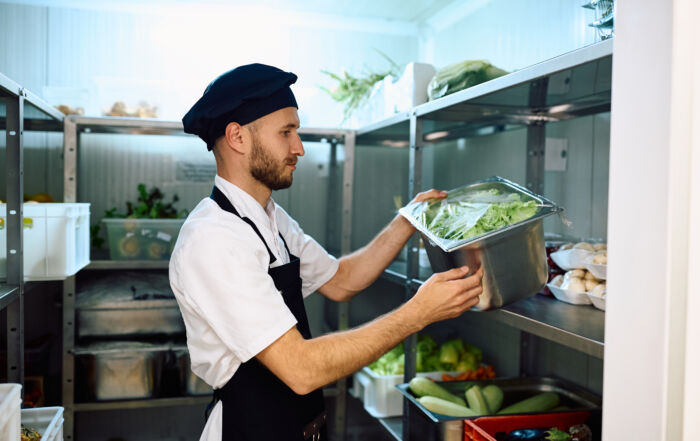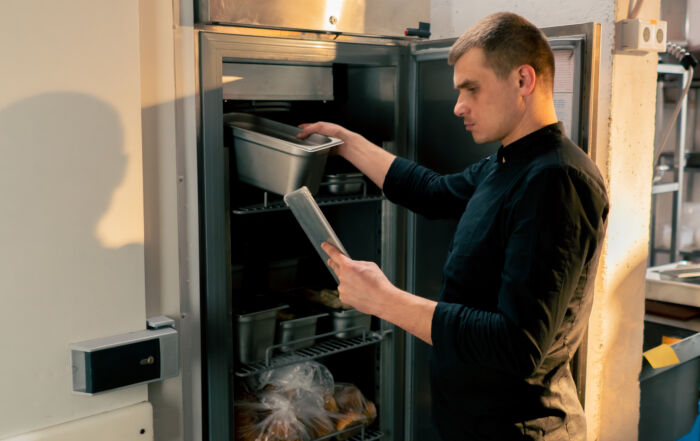The Route to Safer Fresh Fruits and Vegetables
Although fruits and vegetables are one of the healthiest foods sources in our diet, we continue to have foodborne disease outbreaks of significance from produce, sometimes affecting large groups of people in multiple states because of their wide distribution. The CDC estimates that fresh produce now causes a huge number of foodborne illness outbreaks in the United States. Produce needs our continued food safety efforts at the restaurant level as well as at the stages in agricultural production. Occasionally, fresh fruits and vegetables can become contaminated with harmful bacteria or viruses, such as Salmonella, E. coli 0157:H7, Norovirus, and Hepatitis A. This contamination can occur at any point from the field to our table. If eaten, contaminated fruits and vegetables can cause foodborne illness.
How does produce become contaminated? Because most produce is grown in a natural environment, it is vulnerable to contamination with pathogens (disease causing microorganisms). Factors that may affect produce contamination include agricultural water quality, the use of manure as fertilizer, the presence of animals in fields or packing areas, and the health and hygiene of workers handling the produce during production, packing, processing, transportation, distribution, or preparation. The fact that produce is often consumed raw without any type of intervention (no cook or kill step) that would reduce, control, or eliminate pathogens prior to consumption contributes to its potential as a source of foodborne illness. Recent notable outbreaks from produce involved tomatoes, sprouts, green onions, cut melons, parsley, lettuce, strawberries, and juices such as un-pasteurized apple cider and orange juice.
Safer storage, preparation & segregation
Although foodborne illness can be serious, there are several easy steps you can take in a food service kitchen to help keep fresh fruits and vegetables safe to eat.
- Wash your hands with warm water and soap for 20 seconds before and after handling raw produce.
- No bare hand contact with ready-to-eat foods applies once the produce has been washed and you begin prepping or cutting it.
- Cut away damaged or bruised areas on produce before preparing and/or eating. Produce that looks rotten should be discarded.
- Health risks of raw sprouts are significant for high risk people (children, elderly, immune compromised). Contamination is on the seeds that the sprouts grow from. Bean, alfalfa, clover, or radish should be thoroughly cooked before eating.
- Segregate fruits and vegetables that will be eaten raw from other foods on prep tables—especially raw meat, poultry or seafood
- Store perishable fresh fruits and vegetables refrigerated at 41°F or below, above and separated from raw meats, poultry, and seafood.
Wash it!
Wash fruits and vegetables under slightly warmer running water, just before eating, cutting, or cooking.
- All produce should be thoroughly washed before eating. This includes produce grown organically, purchased from a food distributor, grocery store or farmers market. Even if you plan to peel the produce before eating, it is still important to wash it first.
- Wash, rinse, and sanitize all countertops, cutting boards and utensils (including fruit/vegetable brushes) with a mixture of 1 teaspoon chlorine bleach in 1 quart of water or run them through the dishwasher if they fit. Do this before and after preparing food.
- When washing fresh produce, it is also important to have a clean sink, colander or salad spinner. Wash the sink or equipment with hot, soapy water and then rinse and sanitize it by pouring a mixture of 1 teaspoon of chlorine bleach in 1 quart of water into the sink.
- Scrub firm produce such as melons and cucumbers with a clean produce brush.
- Drying produce with a clean paper towel may further reduce bacteria that may be present.
- Lettuce & fresh greens — Remove the outer leaves of lettuce and cabbage before washing them. Cut leafy greens are considered a TCS (time and temperature control for safety) food in the FDA Food Code after cutting so they must be stored at 41°F or below.
- What about pre-washed produce? Many produce items like lettuce are pre-washed and if so it will state it on the packaging. This can be used without further washing, but as an extra measure of caution, you can wash the produce again, just before using. If the bag was opened and partially used, wash the produce portion at the time of use and check the expiration date. Bagged, prewashed produce is a TCS food and must be refrigerated (41°F or below).
Washing Tips
- For soft fruits and vegetables (tomatoes), gently rub them with your hands to loosen the dirt. Tomatoes can be ripened at room temperature, but must be washed and then refrigerated (41°F or below) when sliced. They are also a TCS food. Wash tomatoes in slightly warmer (+10°F ) than the temperature of the produce. Studies show slightly warmer water keeps the pores of the edible skin open and water removes more bacteria.
- To wash berries, parsley and greens, put them in a clean colander and spray them with a kitchen sink sprayer. Or, gently turn the produce as you hold it under running water. Be sure to turn and gently shake the colander as you wash the produce.
- Some fruits and vegetables may have waxy coatings added to keep them fresh, to protect them from bruising and to prevent the growth of mold. Waxes also make fruits and vegetables more attractive. These waxes are safe to eat.
 What is “organic produce”? Organic produce is grown without using most conventional pesticides; fertilizers made with synthetic ingredients or sewage sludge; bioengineering; or ionizing radiation. Before a product can be labeled “organic,” a government-approved certifier inspects the farm where the food is grown to make sure the farmer meets the U.S. Department of Agriculture’s organic standards. Companies that handle or process organic food before it reaches the supermarket or restaurant must be certified, too.
What is “organic produce”? Organic produce is grown without using most conventional pesticides; fertilizers made with synthetic ingredients or sewage sludge; bioengineering; or ionizing radiation. Before a product can be labeled “organic,” a government-approved certifier inspects the farm where the food is grown to make sure the farmer meets the U.S. Department of Agriculture’s organic standards. Companies that handle or process organic food before it reaches the supermarket or restaurant must be certified, too.
What about produce washes? On the market today are several products called produce washes. These products usually include substances such as phosphates, baking soda or citric acid. Some of these products may help remove additional dirt, pesticides and bacteria from fruits and vegetables. However, these products are expensive and they are not recommended by any federal agency to clean fresh produce.
Ethylene gas & produce—Some fruits and vegetables, like bananas and tomatoes, naturally produce ethylene gas when they ripen. Often they are harvested in the un-ripened state to preserve firmness and for long shelf life. They are later exposed to ethylene gas to induce ripening by produce companies before shipping.
Bottom Line: How can you as a manager help keep your produce safe? Recognize that some fruits and vegetables are potentially hazardous foods (TCS- time and temperature control for safety foods). Work with your suppliers to review sources of your produce, and to insist upon good agricultural practices. Encourage your staff to take the risks seriously and practice impeccable personal hygiene when handling fresh fruits and vegetables, as pathogens on human hands can contaminate these products. Wash fresh produce, but don’t count on washing to remove all pathogens; it doesn’t. Within your operation, be sure to store any chopped or prepped produce under refrigeration.
***
About the Author: Lacie Thrall

READ MORE POSTS
Reducing Waste, Raising Safety: Smart Strategies for Managing Food Waste
In the face of increasing food prices and an ever-increasing demand for foodservice operations to [...]
Cooling Food in Your Operation: Best Practices
Earlier in the month, I talked a bit about safely thawing food and, in my [...]
Chilling Out: A Quick Guide to Thawing Food in Foodservice
Thawing food and cooling food are two challenges we face daily in foodservice operations. Regardless [...]
Recommitting to Food Safety in 2025, One Meal at a Time
The start of a new year is a great time to cast aside old habits and [...]










